Threading a needle and begging for cleverness
This is the earliest way of begging for cleverness, which began in the Han Dynasty and spread to later generations.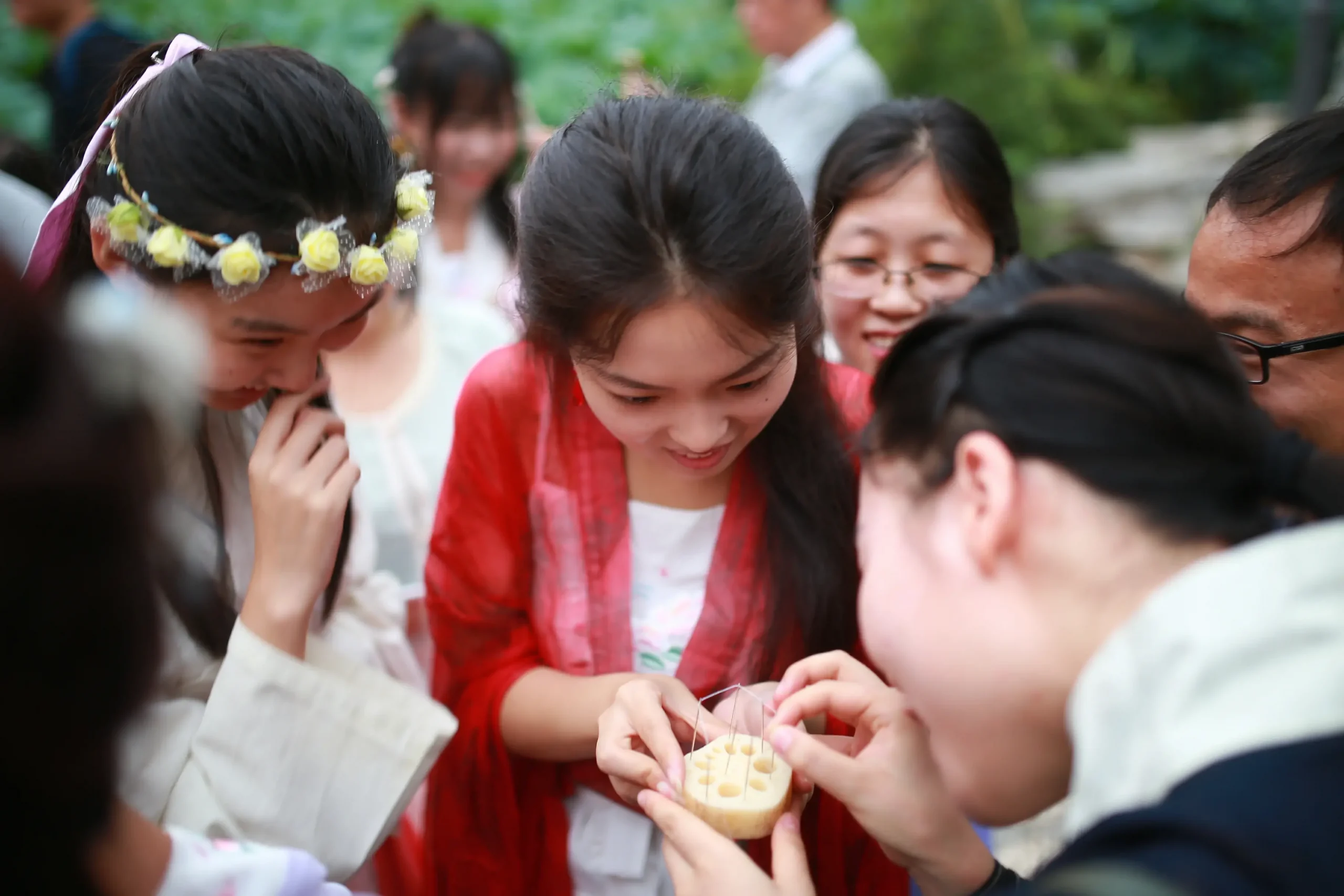
Drying books and drying clothes
According to reports, Sima Yi was quite suspicious of Cao Cao because of his high position and weight. In view of the fact that he pretended to be crazy and hid at home in order to protect himself. Emperor Wu of Wei was still not at ease, so he sent a confidant to order Shi to investigate secretly. It was July 7th, and Sima Yi, who was pretending to be crazy, was also drying books at home. Let Shi go back and report to Emperor Wu of Wei, and Emperor Wu of Wei immediately ordered Sima Yi to return to the court to serve, otherwise he could be taken into custody. Sima Yi obediently obeyed and returned to court. There is another kind of people, in 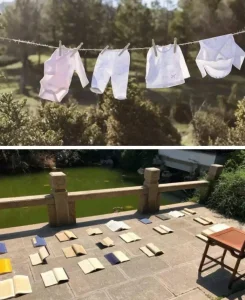 troubled times, express their depression in the form of unrestrained waves. They despised etiquette and opposed the customs of the times. Volume 25 of Liu Yiqing’s “Shi Shuo Xin Yu” said that on July 7, everyone was drying books, and only Hao Long ran to the sun and lay down. They asked him why, and he replied, “I do the reading.” On the one hand, this is contempt for the custom of posting books, and on the other hand, it is also a boast of the talents in one’s belly. Drying your belly means drying your books. The custom of drying clothes in the Han Dynasty created opportunities for wealthy families to show off their wealth in the Wei and Jin Dynasties. Ruan Xian, one of the “Seven Sages of the Bamboo Grove”, looked down on this style of work. On July 7, when his neighbor was drying his clothes, he saw that the shelves were full of silk and satin, dazzling. And Ruan Xian unhurriedly picked up a worn-out dress with a bamboo pole. Someone asked him what he was doing, and he said, “If you can’t get rid of the vulgarity, let’s talk about it!” , How popular is the custom of drying clothes.
troubled times, express their depression in the form of unrestrained waves. They despised etiquette and opposed the customs of the times. Volume 25 of Liu Yiqing’s “Shi Shuo Xin Yu” said that on July 7, everyone was drying books, and only Hao Long ran to the sun and lay down. They asked him why, and he replied, “I do the reading.” On the one hand, this is contempt for the custom of posting books, and on the other hand, it is also a boast of the talents in one’s belly. Drying your belly means drying your books. The custom of drying clothes in the Han Dynasty created opportunities for wealthy families to show off their wealth in the Wei and Jin Dynasties. Ruan Xian, one of the “Seven Sages of the Bamboo Grove”, looked down on this style of work. On July 7, when his neighbor was drying his clothes, he saw that the shelves were full of silk and satin, dazzling. And Ruan Xian unhurriedly picked up a worn-out dress with a bamboo pole. Someone asked him what he was doing, and he said, “If you can’t get rid of the vulgarity, let’s talk about it!” , How popular is the custom of drying clothes.
Seeding for children
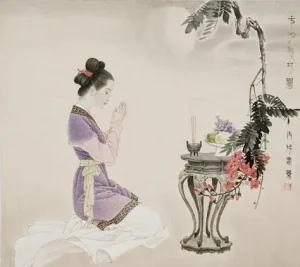 In the old custom, a few days before the Qixi Festival, first spread a layer of soil on a small wooden board, sow corn seeds, let it grow green and tender seedlings, and then place some small huts, flowers and trees on it to make it look like a small village of farmers. , called “shell board“, or soak mung beans, small beans, wheat, etc. in a magnetic bowl, wait for it to grow a few inches of buds, and then tie them into a bunch with red and blue silk ropes, called “seeds“. It is called “Wushengbasin” or “Living Flowerpot“. All parts of the south are also called “paoqiao“. Various images are also made of wax, such as the characters in the stories of Cowherd and Weaver Girl, or the shapes of vultures, mandarin ducks, and other animals, which are floated on the water, which is called “floating on water“. There are also baby dolls made of wax, which women buy and float in the water and soil, thinking that they are suitable for children, and they are called “Huasheng“.
In the old custom, a few days before the Qixi Festival, first spread a layer of soil on a small wooden board, sow corn seeds, let it grow green and tender seedlings, and then place some small huts, flowers and trees on it to make it look like a small village of farmers. , called “shell board“, or soak mung beans, small beans, wheat, etc. in a magnetic bowl, wait for it to grow a few inches of buds, and then tie them into a bunch with red and blue silk ropes, called “seeds“. It is called “Wushengbasin” or “Living Flowerpot“. All parts of the south are also called “paoqiao“. Various images are also made of wax, such as the characters in the stories of Cowherd and Weaver Girl, or the shapes of vultures, mandarin ducks, and other animals, which are floated on the water, which is called “floating on water“. There are also baby dolls made of wax, which women buy and float in the water and soil, thinking that they are suitable for children, and they are called “Huasheng“.
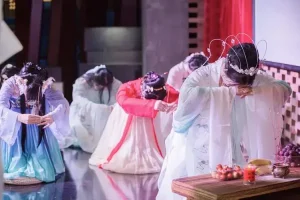 Worship the Weaver Girl
Worship the Weaver Girl
“Worshiping the Weaver Girl” is purely a matter for young girls and young wives. Most of them make an appointment with their friends or neighbors in advance with five or six people, up to a dozen people, and jointly hold the event. The ceremony is to set a table under the moonlight, and put tea and wine on the table. Fruits, five seeds (longan, red dates, hazelnuts, peanuts, melon seeds) and other offerings; there are also a few flowers, bunches of red paper, put them in a bottle, and a small incense burner in front of the flowers. Then, the young women and girls who make an appointment to participate in worshiping the Weaver Girl will fast for one day, stop taking a bath, and come to the host’s house on time. Facing the Vega constellation, meditate on your own thoughts. For example, girls wishing to be beautiful or marry a good man, and young women wishing to have a son early, etc., can pray silently to Vega. Play until midnight.
Eat Qiaoguo
Qiaoguo is the most famous food for Qixi Festival. Qiaoguo, also known as “Qiqiaoguo“, has many styles. The main material is oil surface molasses. In “Tokyo Menghualu“, it is called “Xiaoyaner” and “Fruit-eating Pattern“, and the patterns include Nixiang, Fangsheng and so on. In the Song Dynasty, there were already Qixi Qiaoguo on the streets. If you buy a catty of 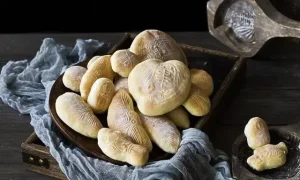 Qiaoguo, there will also be a pair of dolls wearing battle armor, such as door gods, known as the “Fruit General“. The method of Qiaoguo is: put the sugar in a pot to melt it into syrup, then mix it with flour and sesame seeds, mix it well, spread it on the table and thin it out, let it cool down, cut it into long squares with a knife, and finally fold it into fusiform noodles. Qiao embryo, into the deep-fried until golden Serve. A dexterous woman can also knead and mold various patterns related to the legend of Qixi Festival. In addition, the melons and fruits used when begging for cleverness can also be varied. Or carve melons and fruits into exotic flowers and birds, or emboss patterns on the surface of melon skin.
Qiaoguo, there will also be a pair of dolls wearing battle armor, such as door gods, known as the “Fruit General“. The method of Qiaoguo is: put the sugar in a pot to melt it into syrup, then mix it with flour and sesame seeds, mix it well, spread it on the table and thin it out, let it cool down, cut it into long squares with a knife, and finally fold it into fusiform noodles. Qiao embryo, into the deep-fried until golden Serve. A dexterous woman can also knead and mold various patterns related to the legend of Qixi Festival. In addition, the melons and fruits used when begging for cleverness can also be varied. Or carve melons and fruits into exotic flowers and birds, or emboss patterns on the surface of melon skin.
If you want to know the origin of Qixi Festival, please visit www.news.eduprchina.com
If you want to know Qixi Festival in the Four Great Classics, please visit www.istudy-china.com



